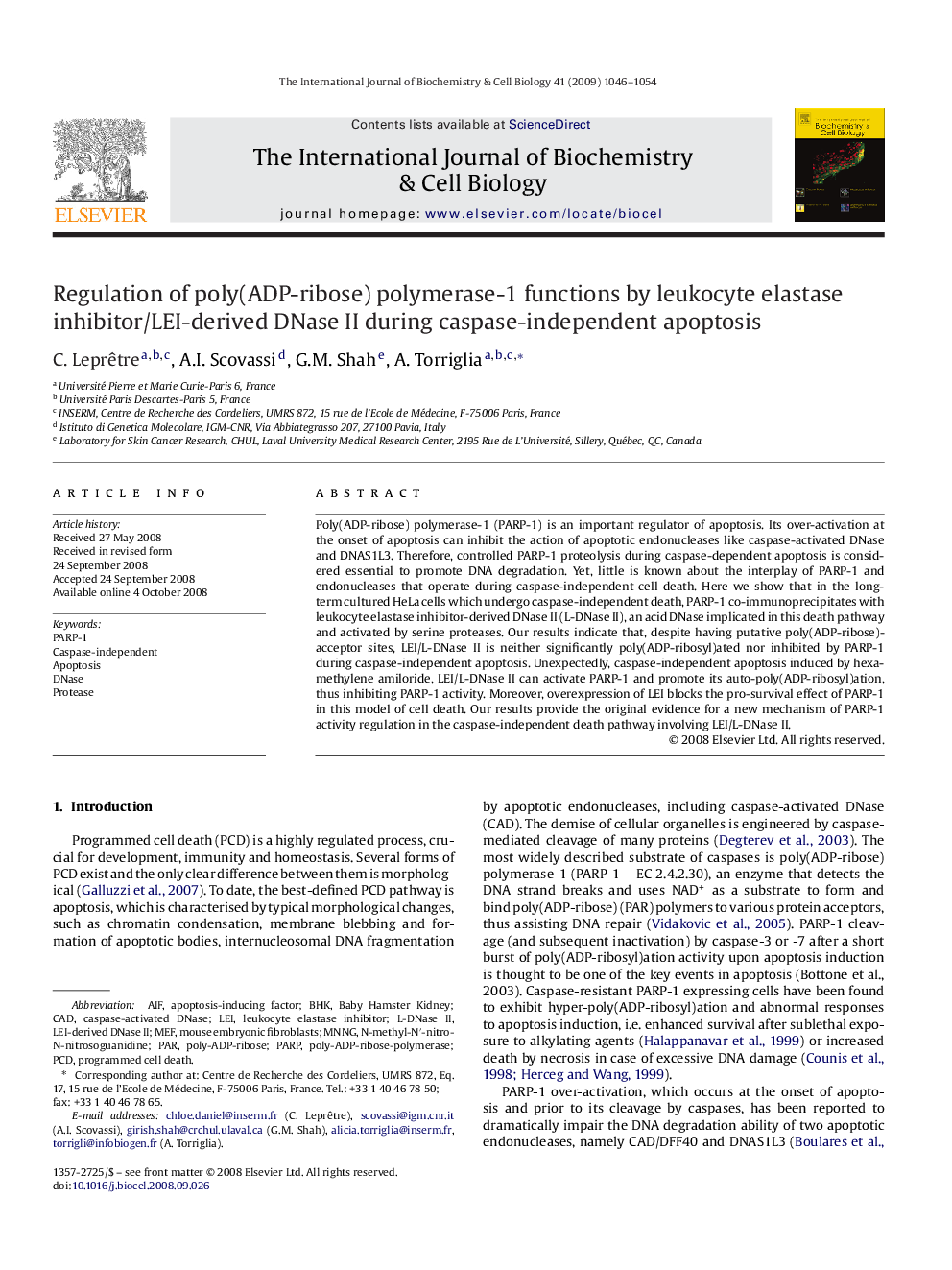| Article ID | Journal | Published Year | Pages | File Type |
|---|---|---|---|---|
| 1985091 | The International Journal of Biochemistry & Cell Biology | 2009 | 9 Pages |
Abstract
Poly(ADP-ribose) polymerase-1 (PARP-1) is an important regulator of apoptosis. Its over-activation at the onset of apoptosis can inhibit the action of apoptotic endonucleases like caspase-activated DNase and DNAS1L3. Therefore, controlled PARP-1 proteolysis during caspase-dependent apoptosis is considered essential to promote DNA degradation. Yet, little is known about the interplay of PARP-1 and endonucleases that operate during caspase-independent cell death. Here we show that in the long-term cultured HeLa cells which undergo caspase-independent death, PARP-1 co-immunoprecipitates with leukocyte elastase inhibitor-derived DNase II (L-DNase II), an acid DNase implicated in this death pathway and activated by serine proteases. Our results indicate that, despite having putative poly(ADP-ribose)-acceptor sites, LEI/L-DNase II is neither significantly poly(ADP-ribosyl)ated nor inhibited by PARP-1 during caspase-independent apoptosis. Unexpectedly, caspase-independent apoptosis induced by hexa-methylene amiloride, LEI/L-DNase II can activate PARP-1 and promote its auto-poly(ADP-ribosyl)ation, thus inhibiting PARP-1 activity. Moreover, overexpression of LEI blocks the pro-survival effect of PARP-1 in this model of cell death. Our results provide the original evidence for a new mechanism of PARP-1 activity regulation in the caspase-independent death pathway involving LEI/L-DNase II.
Keywords
MNNGBHKPCDLEIPARPpoly-ADP-riboseCaspase-independentPoly-ADP-ribose-polymeraseMEFPARP-1L-DNase IIDNAseN-methyl-N′-nitro-N-nitrosoguanidineAIFbaby hamster kidneyParApoptosisCADapoptosis-inducing factorProgrammed cell deathLeukocyte elastase inhibitormouse embryonic fibroblastsProteasecaspase-activated DNase
Related Topics
Life Sciences
Biochemistry, Genetics and Molecular Biology
Biochemistry
Authors
C. Leprêtre, A.I. Scovassi, G.M. Shah, A. Torriglia,
